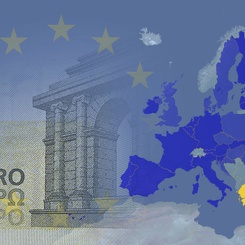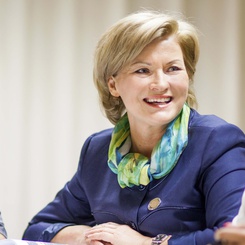Cristina Terra, Professor of Economics at ESSEC Business School, shares her research* into the effects of regulations and policies on the informal economy and points the world’s governments towards a dilemma: should the shadow economy be tolerated after all?
*Informality in developing economies: Regulation and fiscal policies – Olivier Charlot, Franck Malherbet and Cristina Terra, published in the Journal of Economic Dynamics & Control, Elsevier.
Common to both developed and developing economies, the shadow economy – economic activity that snubs taxes, social charges and in many cases labor law regulations – nevertheless corresponds to a large part of the economy in developing countries, in some cases representing more than half of economic activities. As a percentage of GDP, it ranges from 25-60% in South America, from 13-50% in Asia, and stands at around 15% in OECD countries with a peak at 30% in some European countries. For Cristina Terra, the figures point – as opposed to much previous academic literature on the subject – towards the acknowledgement that the informal economy simply cannot be treated as a residual sector. It is no wonder that governments throughout the world, eager to retrieve much-needed revenues, have been trying to figure out the informal economy issue for some time.
Prof. Cristina Terra of ESSEC Business School, together with fellow researchers from UCP and the IZA – the German Institute for the Study of Labor – have carried out original research* into the shadow economy that puts the practice of government regulation and fiscal policies to the test – with surprising results for the dilemma over whether to adopt hard or soft approaches to informal economic practices.
Under the lens
Although widespread, the informal economy is associated with a number of undesirable characteristics. Informal firms tend to be less productive, pay lower wages, and flaunt laws protecting employee rights and working conditions. Their very existence puts in check the rule of law and the integrity of public institutions. The obvious strategy would be for governments to adopt a hardline, repressive approach, but policies aimed at reducing informality, however, seem to have a number of undesirable effects. It is generally argued that unemployment and informality are the two faces of the same coin and that policy makers cannot contend with the latter without harming the former. Moreover, such policies may also induce undesirable effects on wage inequality.
The aim of Cristina Terra’s research, focusing on developing countries in Latin America and specifically Brazil, was therefore to investigate the overall impact of state policies to reduce the shadow economy and seek to detect whether a possible trade-off exists. To do this, a model was developed that treated the informal sector not as a residual sector but as part-and-parcel of the wider economic system. The model – novel in many ways – incorporated the definitions of informality as a low-productivity, zero-tax sector with higher turnover and easier adaptation to the labor market. Other features of the model included the avoidance of costs stemming from regulations, lower market entry costs and the fact that the informal economy is not subject to wage agreements set by collective bargaining. Overall, Cristina Terra’s model generated a more competitive informal sector than had usually been adopted for research. As such, this enabled both a more realistic analysis of existing policies and the study of alternative economic policies to decrease informality.
The dilemma
Governments in developing countries are faced with a dilemma. A hard or soft approach to the shadow economy? And to what extent should a government tolerate acceptance of its existence? The logic is to adopt hard tactics of enforcing the law with sanctions and strengthening the detection of informal working while introducing policies to encourage those who are tempted to work in the informal economy to swap sides, such as decreasing the costs related to starting up a business. Indeed, the statistics gathered point toward the fact that, among the Latin American countries included in the research, the informal sector tends to be larger in countries where barriers to market entry – that is, the creation of businesses – are stricter.
Professor Terra’s research showed this to be true. By lessening market regulation and thereby decreasing entry costs to the formal sector, both the rate of the shadow economy and unemployment decrease simultaneously. This means that there is not necessarily room for a trade-off between these two elements.
Fiscal policies designed to lower taxes on payroll – and therefore give a boost to business and the formal economy – carry with them their own set of negative by-products: lower taxes imply higher wages, meaning higher rates of inequality. Furthermore, if advantageous fiscal policy is also accompanied by government crackdown and the enforcement of anti-informality measures, then the effect – although decreasing the shadow economy – is seen to be a rise in unemployment. Indeed, increasing informality detection alone seems to appear the least preferable policy option for governments, since it both increases unemployment and reduces wages. To some extent, this could explain why the shadow economy is so widely tolerated.
The policy choice?
For developing countries where in some cases the informal sector employs represents more than half of the labor force, the choice therefore seems to be one of laying emphasis on making it easier for businesses to enter the market via deregulation while softening the use of fiscal policy – lowering taxes on payroll – and the use of enforcement and sanction. In a nutshell, the carrot is preferable to the stick – but not just any old carrot.
A number of developing economies with large informal sectors have undergone significant trade liberalization policies. It may be argued that the effects of trade liberalization are qualitatively similar to those of a product market deregulation. Cristina Terra believes, though, that further research in this area is called for, with the development of a full-fledged open economy model with an informal sector. This will be the center of her next research project.
Useful links:
- The research paper: Informality in developing economies: Regulation and fiscal policies.
- Terra, Cristina (2015), Principles of International Finance and Open Economy Macroeconomics: Theories, Applications and Policies, Academic Press.
- Terra, Cristina (2013), Finanças Internacionais - Macroeconomia Aberta: Teoria, Aplicações e Políticas, Elsevier-Campus.
- Consult the full list of Prof. Cristina Terra’s published papers









